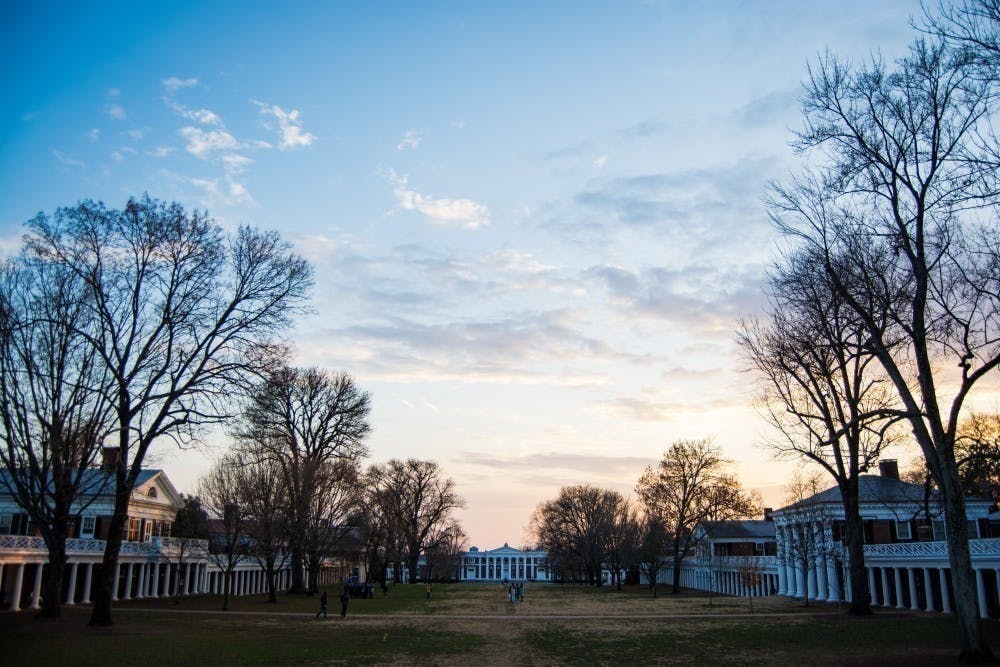The University released demographic data on the 2022-23 cohort of Lawn residents Feb. 11. An annual tradition, this data is intended to demonstrate the diversity of academic knowledge, extracurricular achievement and lived experiences present in the incoming cohort. This year’s data has some high points. 68 percent of offers went to women, a historically marginalized group at the University that didn’t achieve full coeducation until the 1970s. Similarly, just under 47 percent of offers went to students of color, a decrease from last year’s 60 percent but still a vast increase compared to previous years. Still, this data also reveals concerning and disappointing statistics regarding the representation of academic disciplines and University schools on the Lawn.
About 70 percent of offers went to students in the College — a decrease from last year. College students only make up about 65 percent of the student body, so this is slightly over-representative though not egregious. However, as the University’s largest school, the College has dozens of majors students can enroll in. Lawn statistics for the upcoming cohort reveal that while some College majors — like Global Studies — received 7 percent of rooms, plenty of others received no rooms at all. While the College may be approximately representative in its Lawn room count, internally it is saturated with politically oriented majors.
The McIntire School of Commerce and Frank Batten School of Leadership and Public Policy, however, had 12 percent and 8 percent collectively. Commerce and Batten students together make up only 5 percent of the student body. Taken together, 90 percent of offers went to students in the College, Commerce and Batten — which only make up 70 percent of the University student body.
The School of Engineering had two students — or 4 percent of offers — while the School of Nursing and School of Architecture had zero. Engineering, Nursing and Architecture students collectively make up about 8 percent of the student body. In short, College, Commerce and Batten students were offered Lawn rooms at rates significantly higher than their share of the student body, while Engineering, Nursing and Architecture students were offered rooms at a rate far below their representative rate.
The University proudly declares “Lawn residents are a diverse group of students who represent widely varying activities, backgrounds and interests.” As a current Lawn resident myself, I can attest to this — the diversity of academic disciplines, extracurricular achievements and lived experiences represented on the Lawn this year is awe-inspiring. However, it appears that the incoming cohort of Lawn residents really only represents a very select group of the humanities majors offered at the University — Engineering, Nursing and Architecture majors are either underrepresented or not represented at all.
This is incredibly disappointing. The Academical Village is meant to represent the entire University — all of its schools and disciplines, a wide range of extracurricular organizations and a collection of lived experiences. It effectively loses its purpose of shared knowledge when a majority of people occupying the space come from the same programs and organizations — the University Guide Service consistently has over a dozen members on the Lawn — and experiences.
Of course, it's possible the applicant pool this year was simply tilted in favor of the humanities — that less students from these underrepresented schools applied. This is not a counterpoint to my argument that the Lawn does not represent the University community but rather a larger symptom. As I have previously written, the Lawn selection process is biased towards politically active College students. It undercounts the value of Engineering, Nursing and Architecture majors, student workers and non-traditional forms of unselfish service to the University and Charlottesville communities. Moreover, the number of Lawn applications has been steadily declining for many years — with only 189 applicants for the 2021-22 cohort. Clearly, University students are disenchanted by the idea of Lawn residency or dissuaded from applying because of preexisting notions of what a true Lawn resident looks like. The misrepresentation present in the incoming cohort of residents is another symptom of this issue. The University must address this soon, lest the Academical Village loses its status as a living and learning community.
Noah Strike is a fourth year in the College of Arts and Sciences. He can be reached at opinion@cavalierdaily.com.







